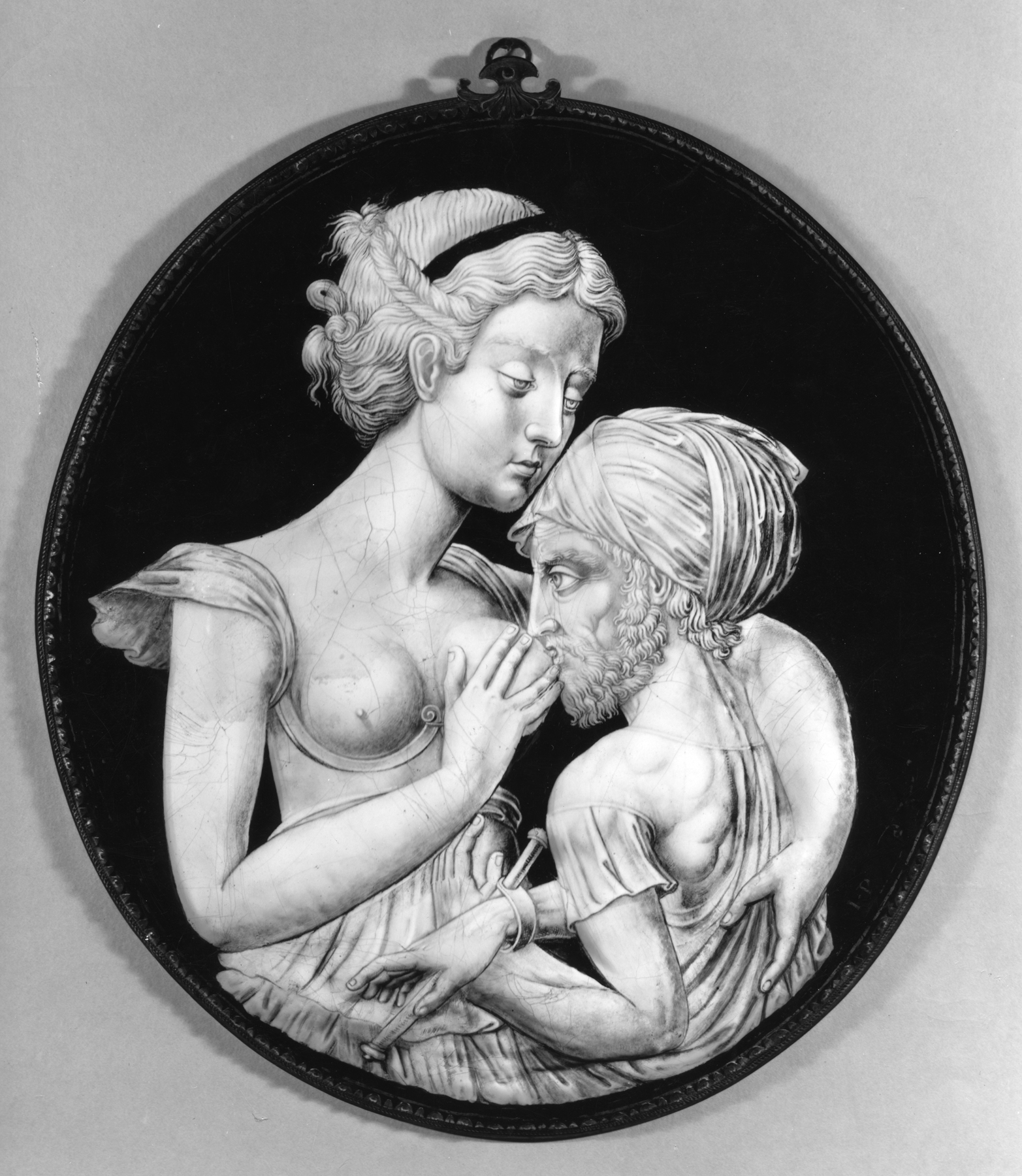Greek Charity
(Renaissance Europe )
The subject, known since the last quarter of the 15th century as "Greek [or Roman] Charity," is based on a text of Valerius Maximus, "Factorum et Dictorum Memorabilium Libri IX," but refers to an earlier legend which appeared at Rome at the beginning of the 2nd century BC, in connection with the construction of a temple dedicated to Pietas (Charity). The protagonists in the story are Micon and Pero (characters known also under the names of Cimon and Pero; according to Sextus Pompeius Festus, the grammarian who, around AD 150, suggested a Greek origin for the theme, Cimon was an Athenian). Micon (or Cimon) who had been condemned to death, was visited daily in his cell by his daughter, Pero, who nursed him from her breast and so prevented him from perishing of starvation. Micon wears a turban and a short-sleeved tunic, and is represented with his hands fastened together by manacles on a cross-bar. Pero is dressed according to the Italian fashion of the early 16th century. The popularity of the subject was probably due to its erotic quality.
The plaque is signed in gilt letters, I. P., followed by a gilt foliate scroll. Two gilt lines form a border.
Provenance
Provenance (from the French provenir, 'to come from/forth') is the chronology of the ownership, custody, or location of a historical object.
Michel Boy Collection, Paris, by purchase; Michel Boy Collection Sale, Hotel Drouot, Paris, May 15, 1905, no. 200; Seligmann Brothers, Paris, 1906, by purchase; Henry Walters, Baltimore, May 1906, by purchase; Walters Art Museum, 1931, by bequest.
Conservation
| Date | Description | Narrative |
|---|---|---|
| 5/7/1965 | Treatment | other |
Geographies
France, Limoges (Place of Origin)
Measurements
H: 13 3/4 x W: 12 in. (35 x 30.5 cm)
Credit Line
Acquired by Henry Walters, 1906
Location in Museum
Not on view
Accession Number
In libraries, galleries, museums, and archives, an accession number is a unique identifier assigned to each object in the collection.
In libraries, galleries, museums, and archives, an accession number is a unique identifier assigned to each object in the collection.
44.60


